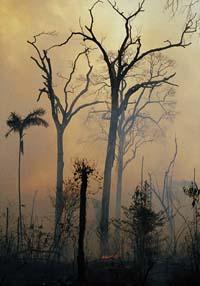Charcoal representative of the climate
2006/10/01 Elhuyar Zientzia Iturria: Elhuyar aldizkaria

The analysis of fossilized charcoal has allowed geologists at the University of London to draw conclusions on climate evolution. The fossils analyzed originated 440-250 million years ago as a result of the fires that occurred in those times. It is worth mentioning the global proliferation and expansion of vegetation during this period.
It has now been shown that the propagation of the plants was related to fires, climate, and composition of the atmosphere.
Among other things, geologists have observed that during the period analyzed the fires were rare in the first 50 million years. But the fires were increasing as the vegetation expanded and the atmospheric oxygen concentration increased. Thus, from 365 million years ago, serious fires occurred around the world, even in areas with humid vegetation.
This explains that, according to the models, 30% of the atmospheric gases were oxygen 275 million years ago, compared to the current 21%. As there was so much oxygen, the plants burned easily. The fire produced charcoal. When coal was generated, carbon was trapped, which influences the cycle of CO2 and, therefore, the evolution of the atmosphere.
In the evolution of the climate they influenced, therefore, many factors: the vegetation, the fires, the composition of the atmosphere... It is difficult to accurately measure the influence of each factor, but at least London geologists are clear that fires should be taken into account when analyzing the climate of the past.




